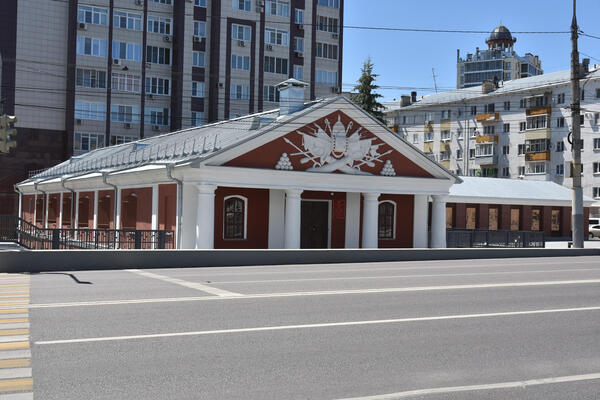One of the most heroic pages in the history of our Motherland will forever be the Great Patriotic War of 1941–1945, which in that tragic period for the whole country became a vivid manifestation of the best character traits of the Soviet people: their extraordinary courage, fortitude, readiness for self-sacrifice and a profound sense of patriotism. The heroism of the Soviet people both at the front and in the rear determined the victory in this war. Many Voronezh units and formations, factories, hundreds of thousands of fighters and commanders, partisans, resistance fighters and home front workers were awarded orders and medals for military exploits and valiant labor, and many of them gave their lives for a small and large homeland, glorifying the Voronezh region for eternity.
In the summer of 1942, the Voronezh land became a frontline territory. The fighting did not subside there for more than six months, and Voronezh residents had to endure severe hardships — almost half of the region was occupied by the enemy.
Large strategic bridgeheads were established on the Voronezh land, and the Red Army launched its offensives from there. The culminating period of the entire war for Voronezh residents was the battle for their hometown. The invaders were never able to completely capture Voronezh, and on January 25, 1943, the city was liberated from the Nazis. The honorary title “City of Military Glory” bestowed upon Voronezh in 2008 was a restoration of historical justice, a recognition of courage, heroism and significant contributions of Voronezh residents to achieving a turning point and the ultimate victory in the Great Patriotic War.
The exhibition is based on materials from the museum’s archives. There are 868 exhibits, including original materials: 224 exhibits from the main collection and 114 from the scientific and auxiliary archive.
In the summer of 1942, the Voronezh land became a frontline territory. The fighting did not subside there for more than six months, and Voronezh residents had to endure severe hardships — almost half of the region was occupied by the enemy.
Large strategic bridgeheads were established on the Voronezh land, and the Red Army launched its offensives from there. The culminating period of the entire war for Voronezh residents was the battle for their hometown. The invaders were never able to completely capture Voronezh, and on January 25, 1943, the city was liberated from the Nazis. The honorary title “City of Military Glory” bestowed upon Voronezh in 2008 was a restoration of historical justice, a recognition of courage, heroism and significant contributions of Voronezh residents to achieving a turning point and the ultimate victory in the Great Patriotic War.
The exhibition is based on materials from the museum’s archives. There are 868 exhibits, including original materials: 224 exhibits from the main collection and 114 from the scientific and auxiliary archive.
Exhibits are marked with AR stickers for identification purposes.

